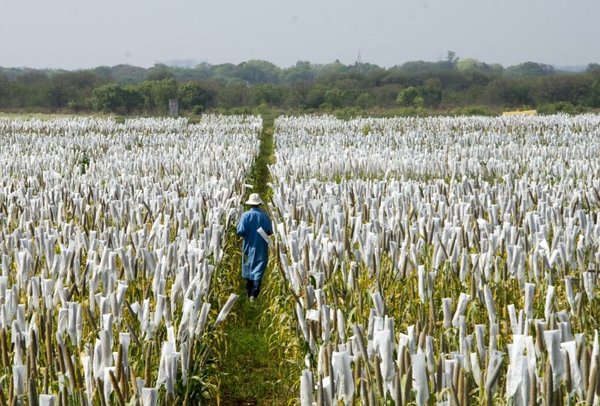 Read this article in French
Read this article in French- Share this article
- Subscribe to our newsletter
ICRISAT – pearl millet’s climate resilience and nutritional secrets decoded
This milestone study, published in the Nature Communication Biology Journal, paves the way for the development of more climate-resilient and nutritionally enhanced crops.
Pearl millet, a climate-resilient grain, serves as a lifeline to over 90 million people in South Asia and sub-Saharan Africa.
It’s remarkable ability to endure scorching temperatures, prolonged droughts and nutrient-deprived soils, sets pearl millet apart as a top solution to bolstering global food and nutritional security in the context of climate change.
Dr Jacqueline Hughes, Director General of ICRISAT, commended the collaboration and said the transformative study would augment ICRISAT's and its partners' ability to continue progress towards the creation of crop varieties that transcend the boundaries of nutrition and climate resilience.
"The benefits of these insights are not confined to pearl millet alone; they also extend to closely related cereal crops like foxtail millet, sorghum, wheat, and rice,” said Hughes.
According to an ICRISAT press release, the institute’s pioneering work in developing the initial draft genome of pearl millet in 2017 laid the foundation for the current breakthrough.
Leveraging advanced technologies, scientists have meticulously pieced together the genetic puzzle, eliminating gaps in the draft genome. High-quality genome assemblies are vital for unravelling the genetic basis of traits such as heat and drought resistance, early maturity, rapid grain development, disease resistance and nutritional attributes, including protein, iron and zinc levels.
Dr Raman Babu, Research Director, Digital Agriculture for Asia-Pacific, Corteva Agriscience, said that armed with new levels of accuracy regarding the intricacies of the pearl millet genome, scientists are now equipped to design and implement innovative breeding strategies to enhance both nutrition and resilience, paving the way for the development of superior pearl millet cultivars.
Pearl millet is genetically coded to produce higher nutritional values
The comparative genome analysis presented in the study serves as a valuable tool for future genome editing applications in pearl millet, particularly in the identification and reintroduction of vital agricultural traits that may have been lost during domestication but remain present in wild species.
The detailed study also highlights that pearl millet is genetically coded to produce higher concentrations of amino acids, specifically cysteine and methionine, when compared to legumes like pigeonpea and chickpea. Combining millet with legumes can create a harmonious mix of amino acids, thereby contributing to a well-balanced diet that can effectively combat malnutrition.
*A genome sequence is a complete and detailed blueprint of an organism's genetic material, which is typically composed of DNA (or RNA in the case of some viruses).
(Icrisat/wi)
Reference:
More information:
Link to the International Crops Research Institute for the Semi Arid Tropics
Link to Corteva agriscience





Add a comment
Be the First to Comment